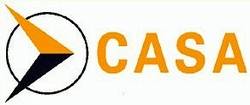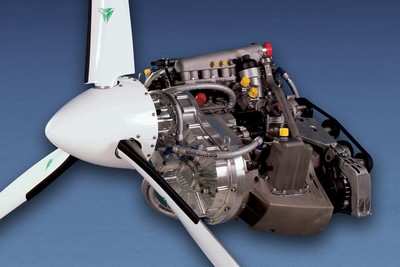Fri, Jan 14, 2005
AD/THIELERT/1 Amdt 1: Engine Failure Due to Electrical System
Failure
 Applicability: All
TAE125-01 aircraft engines.
Applicability: All
TAE125-01 aircraft engines.
Requirement: 1. If not previously accomplished
in accordance with the original issue of this Directive modify the
electrical power supply system by accomplishing one of the
following three modifications in accordance with relevant aircraft
manufacturer or supplemental type certificate holder documentation
(Thielert Aircraft Engine GmbH Service Bulletin TM TAE 125-008
Revision 1 also refers):
a. Replace alternator part number (P/N) 02-7150-55002R2 with
alternator P/N 02-7150-55002R3.
b. Replace alternator P/N 02-7150-55002R2 with alternator and
alternator regulator as follows:
(i) For Diamond aircraft installations - Alternator P/N
02-7150-55008R1 with Alternator Regulator ALT REG.
(ii) For all other installations - Alternator P/N 02-7150-55800R1
with Alternator Regulator ALT REG.
c. Install a stabilising capacitor.
2. Check the actual capacity of the aircraft battery
in accordance with Gill Aircraft Battery Service Manual (Gill
Document Number Q01-1120) Chapter 7.7 - continued airworthiness
determination for Gill aircraft batteries.

Note: LBA AD D-2004-457R1 (EASA
approval 2005-244) refers.
Compliance: For Requirement 1 - At
the next 300 hourly inspection, but no later than 30 April
2005.
For Requirement 2 - At each 100 hourly inspection until
Requirement 1 is accomplished.
This Amendment becomes effective on 19 January 2005.
Background: The German Luftfhart-Bundesamt has
advised that during tests of the electrical system conducted by the
engine manufacturer it was found that in case of a failure of the
battery line, of the battery relay or of the battery the engine may
fail. It was established that the reason for this failure was an
electrical malfunction of the alternator.
The actions specified in the original issue of this Directive
were intended to prevent an in-flight engine failure in case of a
failure of the electrical aircraft power supply, which could result
in an emergency landing or loss of power of the aircraft. This
amendment, whilst reflecting the requirements of the original
issue, extends the compliance time and introduces a repetitive
battery capacity check until modifications are accomplished. The
amendment also introduces minor formatting changes The original
issue of this Directive became effective on 23 December 2004.
More News
Aero Linx: Transport Canada We are a federal institution, leading the Transport Canada portfolio and working with our partners. Transport Canada is responsible for transportation p>[...]
Gross Navigation Error (GNE) A lateral deviation from a cleared track, normally in excess of 25 Nautical Miles (NM). More stringent standards (for example, 10NM in some parts of th>[...]
From AirVenture 2017 (YouTube Edition): Flight-Proven Booster On Display At AirVenture… EAA AirVenture Oshkosh is known primarily as a celebration of experimental and amateu>[...]
Aircraft Parachute System (CAPS) Was Deployed About 293 Ft Above Ground Level, Which Was Too Low To Allow For Full Deployment Of The Parachute System Analysis: The day before the a>[...]
Also: 48th Annual Air Race Classic, Hot Air Balloon Fire, FAA v Banning 100LL, Complete Remote Pilot The news Piper PA-18 Super Cub owners have been waiting for has finally arrived>[...]
 ANN's Daily Aero-Linx (06.29.25)
ANN's Daily Aero-Linx (06.29.25) ANN's Daily Aero-Term (06.29.25): Gross Navigation Error (GNE)
ANN's Daily Aero-Term (06.29.25): Gross Navigation Error (GNE) Classic Aero-TV: Anticipating Futurespace - Blue Origin Visits Airventure 2017
Classic Aero-TV: Anticipating Futurespace - Blue Origin Visits Airventure 2017 NTSB Final Report: Cirrus SR22
NTSB Final Report: Cirrus SR22 Airborne Affordable Flyers 06.26.25: PA18 Upgrades, Delta Force, Rhinebeck
Airborne Affordable Flyers 06.26.25: PA18 Upgrades, Delta Force, Rhinebeck




